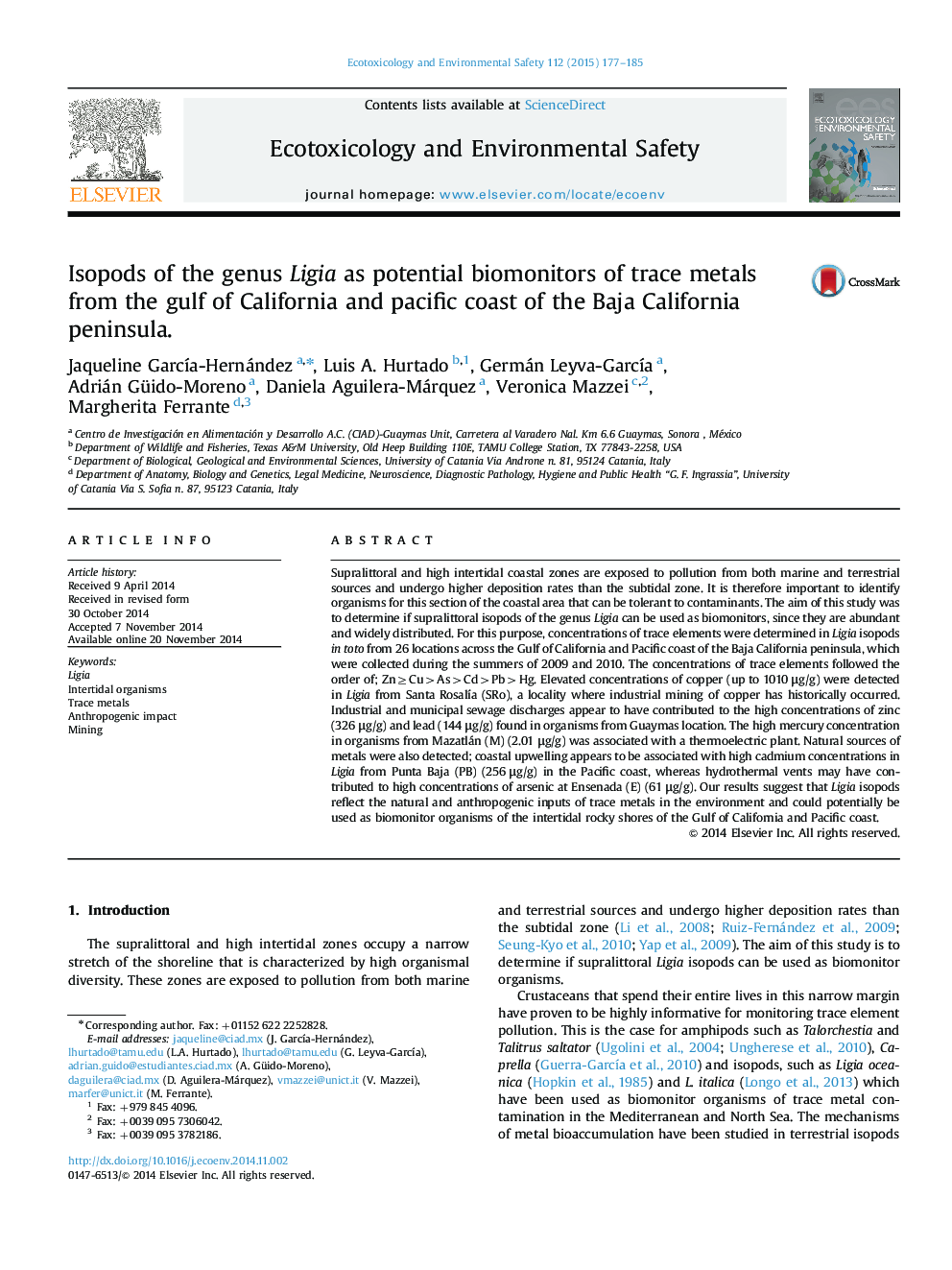| کد مقاله | کد نشریه | سال انتشار | مقاله انگلیسی | نسخه تمام متن |
|---|---|---|---|---|
| 4419796 | 1618951 | 2015 | 9 صفحه PDF | دانلود رایگان |

• Study area include the Gulf of California and Pacific coast of Baja California
• Supralittoral Ligia isopods were sampled for trace element analysis
• Concentrations followed the order Zn≥Cu>As>Cd>Pb>Hg
• Concentrations in Ligia reflected well local environmental conditions
• Ligia isopods are potential biomonitor organisms
Supralittoral and high intertidal coastal zones are exposed to pollution from both marine and terrestrial sources and undergo higher deposition rates than the subtidal zone. It is therefore important to identify organisms for this section of the coastal area that can be tolerant to contaminants. The aim of this study was to determine if supralittoral isopods of the genus Ligia can be used as biomonitors, since they are abundant and widely distributed. For this purpose, concentrations of trace elements were determined in Ligia isopods in toto from 26 locations across the Gulf of California and Pacific coast of the Baja California peninsula, which were collected during the summers of 2009 and 2010. The concentrations of trace elements followed the order of; Zn≥Cu>As>Cd>Pb>Hg. Elevated concentrations of copper (up to 1010 μg/g) were detected in Ligia from Santa Rosalía (SRo), a locality where industrial mining of copper has historically occurred. Industrial and municipal sewage discharges appear to have contributed to the high concentrations of zinc (326 μg/g) and lead (144 μg/g) found in organisms from Guaymas location. The high mercury concentration in organisms from Mazatlán (M) (2.01 μg/g) was associated with a thermoelectric plant. Natural sources of metals were also detected; coastal upwelling appears to be associated with high cadmium concentrations in Ligia from Punta Baja (PB) (256 μg/g) in the Pacific coast, whereas hydrothermal vents may have contributed to high concentrations of arsenic at Ensenada (E) (61 μg/g). Our results suggest that Ligia isopods reflect the natural and anthropogenic inputs of trace metals in the environment and could potentially be used as biomonitor organisms of the intertidal rocky shores of the Gulf of California and Pacific coast.
Figure optionsDownload as PowerPoint slide
Journal: Ecotoxicology and Environmental Safety - Volume 112, February 2015, Pages 177–185